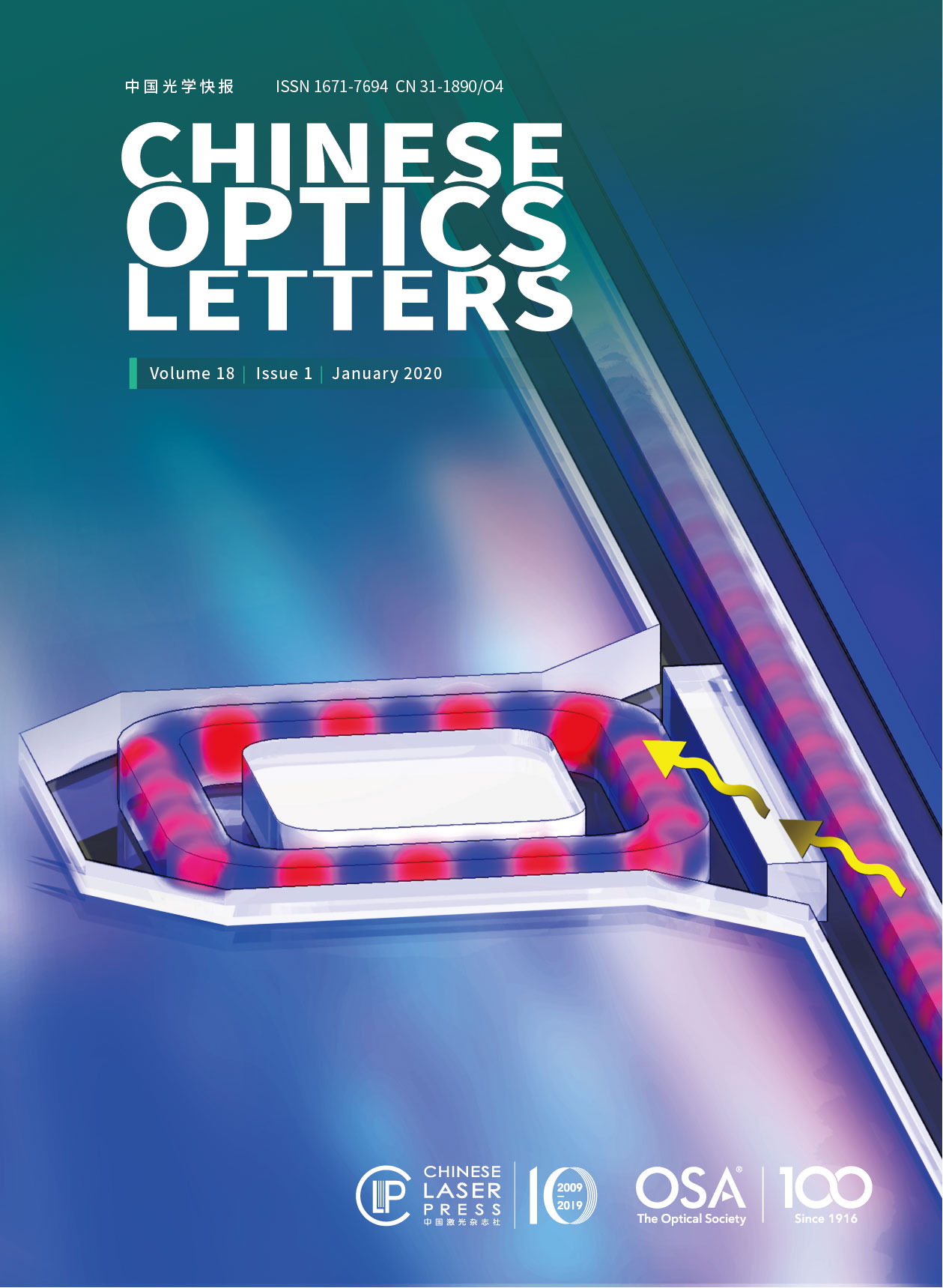Journals >Chinese Optics Letters
- Publication Date: Jan. 10, 2020
- Vol. 18, Issue 1, 010201 (2020)
- Publication Date: Jan. 10, 2020
- Vol. 18, Issue 1, 011701 (2020)
- Publication Date: Jan. 10, 2020
- Vol. 18, Issue 1, 010601 (2020)
- Publication Date: Jan. 10, 2020
- Vol. 18, Issue 1, 010602 (2020)
- Publication Date: Jan. 10, 2020
- Vol. 18, Issue 1, 010901 (2020)
- Publication Date: Jan. 10, 2020
- Vol. 18, Issue 1, 011001 (2020)
- Publication Date: Jan. 10, 2020
- Vol. 18, Issue 1, 011401 (2020)
- Publication Date: Jan. 10, 2020
- Vol. 18, Issue 1, 011402 (2020)
- Publication Date: Jan. 10, 2020
- Vol. 18, Issue 1, 011403 (2020)
- Publication Date: Jan. 10, 2020
- Vol. 18, Issue 1, 011404 (2020)
- Publication Date: Jan. 10, 2020
- Vol. 18, Issue 1, 011405 (2020)
Optical microring resonators are extensively employed in a wide range of physical studies and applications due to the resonance enhancement property. Incorporating coupling control of a microring resonator is necessary in many scenarios, but modifications are essentially added to the resonator and impair the capability of optical enhancement. Here, we propose a flexible coupling structure based on adiabatic elimination that allows low-loss active coupling control without any modifications to the resonators. The self-coupling coefficient can be monotonically or non-monotonically controllable by the proposed coupler, potentially at a high speed. The characteristic of the coupler when implemented in silicon microring resonators is investigated in detail using substantiated analytical theory and experiments. This work provides a general method in coupling control while ensuring the resonance enhancement property, making active coupling control in a resonator-waveguide system feasible.
.- Publication Date: Jan. 10, 2020
- Vol. 18, Issue 1, 013601 (2020)
- Publication Date: Jan. 10, 2020
- Vol. 18, Issue 1, 011901 (2020)
- Publication Date: Jan. 10, 2020
- Vol. 18, Issue 1, 011902 (2020)
- Publication Date: Jan. 10, 2020
- Vol. 18, Issue 1, 012201 (2020)
- Publication Date: Jan. 10, 2020
- Vol. 18, Issue 1, 011201 (2020)
- Publication Date: Jan. 10, 2020
- Vol. 18, Issue 1, 011202 (2020)
- Publication Date: Jan. 10, 2020
- Vol. 18, Issue 1, 012001 (2020)
- Publication Date: Jan. 10, 2020
- Vol. 18, Issue 1, 012501 (2020)
- Publication Date: Jan. 10, 2020
- Vol. 18, Issue 1, 012502 (2020)
- Publication Date: Jan. 10, 2020
- Vol. 18, Issue 1, 013101 (2020)
- Publication Date: Jan. 10, 2020
- Vol. 18, Issue 1, 013102 (2020)
About the Cover
Adiabatic elimination-based coupler for the resonator-waveguide coupling control system.












